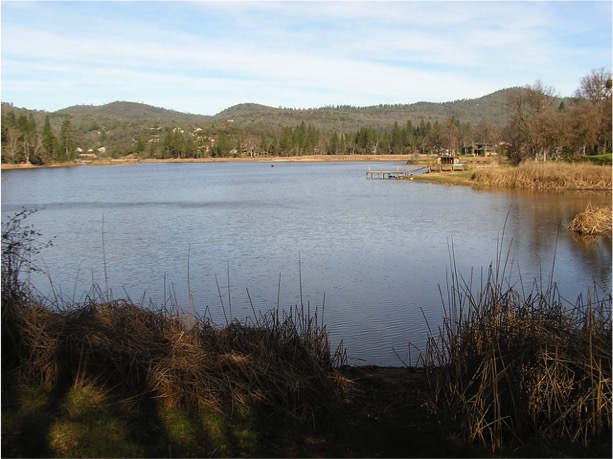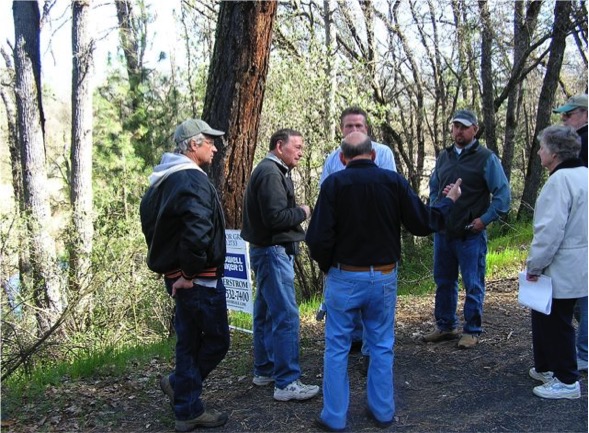
The pictures on these pages show two different reservoirs of high importance to water customers in Tuolumne County. This page features Phoenix Lake – a few miles east of Sonora. The opposite page shows Lyons Reservoir – the source of the water that winds through miles of ditches, flumes, and canals to eventually reach Phoenix Lake or other parts of a water supply system serving most of the communities north of the Tuolumne River. A major restoration project is about to begin at Phoenix Lake.
Back in the 1860’s the original dam at Phoenix Lake was built. A series of mining and water companies exchanged ownership until it was purchased by PG&E in 1927. For the first half of the century, Phoenix Lake was a well-known recreation destination, with movie stars and other celebrities partying at lodges and mansions around the Lake. Gradually its glamour faded. Residential subdivisions crowded its shores. Two dredging projects in the 1980’s removed large amounts of sediment that had filled in much of the Lake. Eventually, the Tuolumne Utilities District (TUD) assumed Lake ownership.
In recent decades, high levels of sediments have filled back in much of the lake – diminishing its capacity. Invasive aquatic weeds reduce oxygen in the water. Water quality has deteriorated, and thickets of dry rushes and cattails seasonally pose fire risk for residences along the Lake. More than a decade ago, CSERC staff began partnering with a group of community members who cared passionately about the Lake. Over time, the Phoenix Lake Task Force was formed to highlight the need for restoring the lake and solving some of its most significant problems.
The combined support from members of the Phoenix Lake Task Force (some of them shown at right), CSERC, and Tuolumne County resulted in TUD gaining a significant State grant to start the design of restoration treatments. Years of planning have been completed, and just last month the public comment period ended. If the studies are approved, there are expected to be at least two years of restoration treatments done at the Lake. CSERC strongly supports this long-awaited project.


